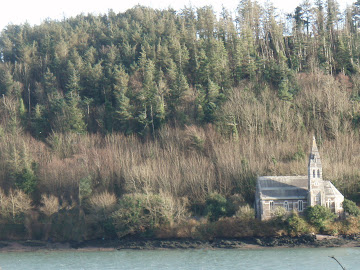Mountview is a Town House Bed and Breakfast located in one of the nicest and most peaceful areas of
Mount View Bed and Breakfast
 Our Bead and Breakfast has four rooms ensuite. Two of the rooms with view to
Our Bead and Breakfast has four rooms ensuite. Two of the rooms with view to Please do not hesitate to ask us for any special requirement you need, we’ll do our best to make your stay enjoyable. We also can advise you for any kind of information you need about Cobh’s area or places to visit .
Were are we / Maps

Click on image for high resolution, download it or print it.
Click on image for high resolution, download it or print it.
Brief History of Cobh
While the history of Cobh is relatively recent, the history of the
1750 - 1800
The village on the island was known as Ballyvoloon, overlooking "The Cove" and this was first referred to as Cove village in 1750 by Smith the historian who said "it was inhabited by seamen and revenue officials". The Water Club established at Haulbowline in 1720 was the progenitor of the present Royal Cork Yacht Club (now based in Crosshaven) and is the oldest in the world. The Royal Cork Yacht Club was based for many years in
The oldest recorded pub on the island is reputed to have been the "Anti Gallicon" situated in the Holy Ground, and apparently liable to flooding when the tide came in.
1800 - 1850
The age of steam brought famous achievements to Cobh, most notably the first steam ship to sail from Ireland to England (1821) and the first steam ship to cross the Atlantic (Sirius 1838) which left from Passage West. In 1849 the name of the town was changed to Queenstown to honour QueenVictoria who visited
It is from here that the ship weighed anchor for the last time towards it fate in the
its overlooking
1850 - 1900
The development of Cove (now Queenstown) continued apace Philip Scott, the shipping merchant built Westbourne and the the architect Desamus Burton who designed many of the buildings in the
Much admired by successive generations of visitors, Westbourne continues to set the standard for architecture in the town today. St. Colman's Cathedral was commenced in 1868 and completed in 1919. This monumental undertaking cost £235,000 collected from various sources.
1900 - 1950
This picture is from where the last passengers of the Titanic left
After the War of Independence and with the signing of the Treaty in 1921 Queenstown became a Treaty Port along with Berehaven and Lough Swilly and this situation remained until 1938.
The town changed its name once again in 1922 to the now familiar
Present
Transatlantic sailing's resumed after the War. Today liners call again on a regular basis to visit
Cobh's past and present is bound to the sea, fishermen, tourism and it's beautiful architecture of buildings.
Toaday one of the most nicest placest to visit of Cobh is the coastline.
It offers beautiful views like the one in the picture. This part of the city is a good place to spend your day where
you can try different types of food (Irish and foreign), to have a rest or try a good pint of guinness in a typical Irish pub like Rob Roy (the most famous) specially for its live acts and decoration or any other pub.
In 1991














 Housed in the restored Victorian
Housed in the restored Victorian





